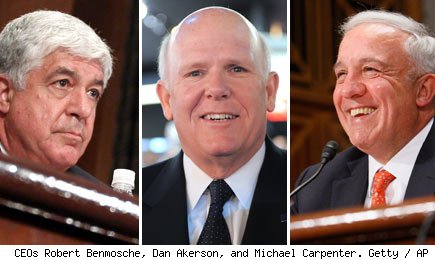 Last week’s news that the Treasury Department had frozen or reduced the salaries of executives at TARP-bailed-out companies prompted a range of reactions from the public.
Last week’s news that the Treasury Department had frozen or reduced the salaries of executives at TARP-bailed-out companies prompted a range of reactions from the public.
On the one hand, the revelation that even those “frozen” salaries would leave the CEOs of AIG (AIG), Ally Financial, and General Motors (GM) earning $10.5 million, $9.5 million, and $9 million in total compensation didn’t generate many pity parties from Joe Six-Pack, who’s struggling to make the mortgage on his suburban homestead.
On the other hand, confirmation that, as a whole, the Feds cut the salaries of 70 separate executives by 10% on average suggests Treasury is doing a good job as steward of the nation’s involuntary investments.
There’s another way to look at this, though, and it’s one worth considering.
These Guys Work for All of Us Now
According to public data, as of this moment, the federal government — that’s you, me and Ben Bernanke makes three — still owns nearly 32% of GM’s outstanding shares, a whopping 69.6% of AIG’s common stock, and just a smidgeon under 79% of Ally Financial’s equity.
So say what you want about the overstuffed comp packages doled out to the overpaid managers of these companies. Like it or not, for the time being, they’re our managers. Moreover, their chief duty today is making sure their businesses do well, so that when Treasury finally gets around to unloading the rest of its shares on the stock market, these shares fetch a superior stock price for the taxpayers.
This gives us all a strong interest in making sure we have the best bosses on the payroll that money can buy.
.
NEXT: America’s 10 Highest Paid CEOs: Which Are Worth the Money?
Get info on stocks mentioned in this article:
AIG
GM
Manage Your Portfolio


Leave a Reply